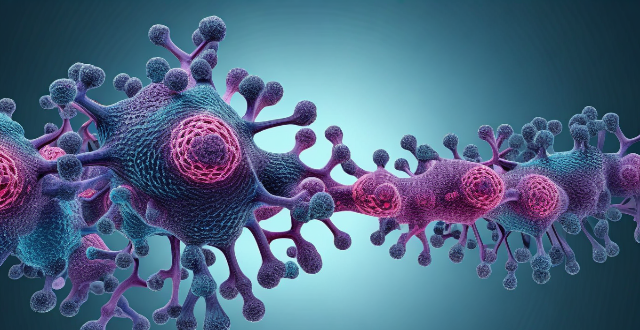Fever Influenza

Is it possible to create a universal flu vaccine that works against all strains of the virus ?
Is it possible to create a universal flu vaccine? The influenza virus is highly adaptable and mutates rapidly, making it challenging to develop a vaccine that works against all strains. However, recent advancements in research and technology have brought us closer to achieving this goal. Strategies for developing a universal flu vaccine include targeting conserved proteins within the virus, using molecular mimicry to trick the immune system into recognizing multiple strains, and utilizing mRNA technology. While there may still be obstacles to overcome, the potential benefits of a universal flu vaccine make it an exciting area of research.

Are all virus variants equally contagious ?
Are all virus variants equally contagious? The answer to this question is not straightforward. Virus variants can differ in their transmissibility, depending on various factors such as their ability to bind to host cells, their replication rate, and the immune response of the host. Some variants may be more contagious than others, while others may have a lower transmission rate. One example of a variant that has been shown to be more contagious than others is the SARS-CoV-2 Omicron variant. This variant was first detected in South Africa in November 2021 and quickly spread around the world due to its high transmissibility. The Omicron variant has also been shown to be more resistant to some vaccines than other variants, which could further increase its spread. However, it is important to note that not all virus variants are equally contagious. Even within the same species of virus, different strains can vary greatly in their transmissibility. For example, the influenza virus has many different strains, each with its own characteristics in terms of transmissibility and severity of symptoms. In conclusion, while some virus variants may be more contagious than others, it is important to remember that not all viruses are created equal when it comes to their ability to spread from person to person.

How many virus variants have been identified so far ?
This article identifies several notable virus variants, including the SARS-CoV-2 Variants (Alpha, Beta, Gamma, Delta, Omicron), Influenza Virus Variants (H1N1, H3N2, H5N1), HIV Variants (Subtype B, Subtype C, Various Recombinant Forms), Hepatitis C Virus Variants (Genotype 1, Genotype 2, Genotype 3), Dengue Virus Variants (DENV-1, DENV-2, DENV-3, DENV-4), and Zika Virus Variants (Asian Lineage, East African Lineage, West African Lineage). It highlights the constant emergence of new variants due to viruses mutating and adapting to their environments.

What are the recommended immunization schedules for infants and toddlers ?
Immunization schedules for infants and toddlers are designed to protect them from serious diseases by providing necessary vaccines at the right time. These schedules vary depending on the country and available vaccines, but general guidelines can be followed. Infants should receive vaccines for hepatitis B, DTP, PCV, Hib, poliovirus, and rotavirus at birth, 2 months, 4 months, 6 months, and 12-15 months. Toddlers should receive DTaP, IPV, Hib, PCV, hepatitis A, chickenpox, and influenza vaccines at 18 months and 2 years. It is important to consult with a healthcare provider to determine the appropriate immunization schedule for your child.

Can studying animal populations help us understand virus origins ?
Viruses often originate from animals, making the study of animal populations crucial for understanding virus origins and preventing disease outbreaks. Zoonotic diseases like influenza, HIV, and Ebola highlight the connection between animal and human health. Identifying animal reservoirs and understanding spillover mechanisms are key to preventing virus transmission. The "One Health" approach emphasizes collaboration across disciplines to address health risks at the human-animal-ecosystem interface. Conservation efforts and maintaining ecosystem health can reduce the risk of zoonotic diseases by preserving biodiversity and minimizing human-wildlife contact. Overall, monitoring animal populations is essential for anticipating and mitigating viral disease emergence and spread.

What vaccinations should I get before traveling to Africa ?
When planning a trip to Africa, it's essential to consider the necessary vaccinations to ensure your health and safety. The continent is vast, and the required immunizations can vary depending on which countries you will visit. Here are some general recommendations: - Yellow Fever Vaccine - Polio Vaccine - Hepatitis A Vaccine - Hepatitis B Vaccine - Rabies Vaccine - Meningococcal Meningitis Vaccine - Typhoid Fever Vaccine - Japanese Encephalitis Vaccine - Cholera Vaccine - Malaria Prevention It's crucial to consult with a healthcare provider or a travel medicine specialist at least 4-6 weeks before your trip to discuss your individual needs based on your itinerary, duration of stay, and personal medical history. They can provide personalized recommendations and ensure you have all the necessary vaccinations for a safe journey.

How long does immunity last after getting vaccinated against COVID-19 ?
Vaccines work by triggering an immune response that teaches the body how to fight off a virus. COVID-19 vaccines provide strong protection against severe illness and hospitalization, but it is still possible to contract the virus after being vaccinated. Immunity wanes over time, so booster shots are recommended to maintain protection. It is important to continue following safety measures such as wearing masks and social distancing to reduce the risk of infection.

What are the most common side effects of vaccines ?
The most common side effects of vaccines are pain and swelling at the injection site, fever and chills, fatigue and headaches, and nausea and diarrhea. These symptoms are usually mild and last for a few days to a week. To manage these side effects, you can take over-the-counter pain relievers, apply ice packs, drink plenty of fluids, get enough sleep, and eat a healthy diet. If you experience severe side effects such as an allergic reaction or persistent symptoms, it is important to seek medical attention immediately.

What kind of first aid supplies should I have in my home emergency kit ?
This article provides a comprehensive list of essential items to include in a home emergency first aid kit. It covers various categories such as adhesive bandages, gauze and roller bandages, medical tape and safety pins, antiseptics and disinfectants, pain relievers and fever reducers, tools and miscellaneous items, and personal items. The article emphasizes the importance of regularly checking expiration dates and replacing supplies as needed. It also suggests ensuring that all family members are aware of the kit's location and how to use its contents properly.

How long does it take for symptoms of COVID-19 to appear ?
The incubation period for COVID-19 is 2-14 days, with an average of 5.1 days. Symptoms include fever, cough, shortness of breath, fatigue, loss of taste or smell, runny nose, body aches, sore throat, and nausea. Not everyone who contracts the virus will experience symptoms, and some may only have mild symptoms while others may require hospitalization.

How do virus variants emerge ?
Virus variants emerge due to evolution, influenced byVirus variants emerge due to evolution, influenced bycombination, host immune influenced by factors like mutation, recombination, host immune response, and environmental factors. Mutations can make viruses more infectious or resistant to treatments, while recombination results in new viruses with characteristics from different parent viruses. The host's immune system drives the virus to mutate and develop new variants that can evade the immune response. Environmental factors like temperature and exposure to chemicals can also influence virus evolution. Understanding these mechanisms is crucial for preventing and controlling viral diseases.

How do greenhouse gas emissions affect human health ?
The text discusses the significant impact of greenhouse gas emissions on human health, highlighting four main areas: air quality, climate change, food security, and waterborne diseases. It provides examples of health problems caused by each of these factors, such as respiratory issues from poor air quality, heat-related illnesses from climate change, malnutrition from food insecurity, and diseases like cholera from waterborne pathogens. The article emphasizes the importance of reducing greenhouse gas emissions to protect public health.

What are the symptoms of COVID-19 ?
COVID-19 is a respiratory illness caused by the SARS-CoV-2 virus. The symptoms of COVID-19 can vary from person to person, but some common symptoms include fever or chills, cough, shortness of breath or difficulty breathing, fatigue or tiredness, muscle or body aches, loss of taste or smell, sore throat, runny nose or congestion, nausea or vomiting, diarrhea, chest pain or pressure, headache, dizziness or lightheadedness, chills and sweats, body aches and pains, red eyes or conjunctivitis (pink eye), skin rash or discoloration (in severe cases), neurological symptoms such as confusion, loss of consciousness, seizures, or paralysis (in severe cases), respiratory distress or difficulty breathing (in severe cases), and death in severe cases (usually due to complications such as pneumonia, acute respiratory distress syndrome (ARDS), multi-organ failure, or cardiac arrest).

What are the side effects of the COVID-19 vaccine ?
The COVID-19 vaccine has been a topic of great interest and concern in recent months. While many people have received the vaccine with minimal side effects, others have reported experiencing more severe reactions. The most common side effects reported after receiving the COVID-19 vaccine include pain, redness, or swelling at the injection site, fatigue, fever, headache, muscle pain, nausea, rash, chills, dizziness, and joint pain. However, there have also been reports of serious side effects associated with the COVID-19 vaccine, including blood clots, angioedema, myocarditis, and Guillain-Barré Syndrome. It is important to note that these cases are extremely rare and far outweighed by the benefits of receiving the vaccine.

How should I handle a cut that is bleeding profusely ?
How to Handle a Cut that is Bleeding Profusely: Stop the Bleeding: Apply direct pressure on the wound using a clean cloth or bandage. Elevate the injured area above your heart level if possible. If the bleeding doesn't stop after 10 minutes, apply more pressure and elevate it higher. Clean the Wound: Once the bleeding has stopped, gently clean around the wound with mild soap and water. Avoid getting any soap into the wound itself as it can cause irritation. Pat dry with a clean towel. Apply Antibiotic Ointment: Apply a thin layer of antibiotic ointment over the wound to prevent infection. Cover with a sterile bandage or gauze. Change Dressing Regularly: Change the dressing regularly to keep the wound clean and dry. Check for any signs of infection such as redness, swelling, warmth, or pus. Seek Medical Attention if Needed: If the bleeding does not stop after 20 minutes of applying pressure, seek medical attention immediately. If there are any signs of infection, such as fever, increased pain, or red streaks leading from the wound, see a doctor.